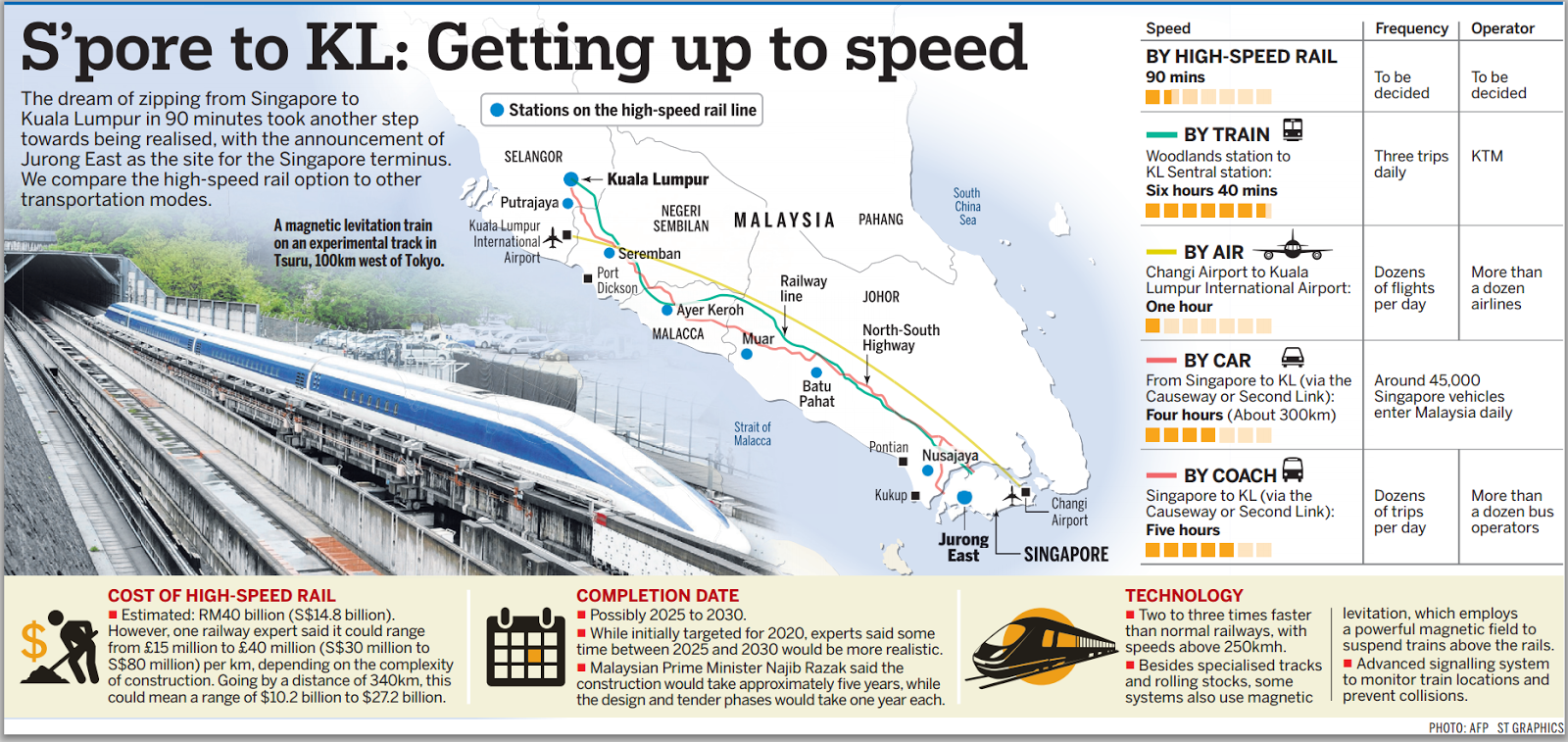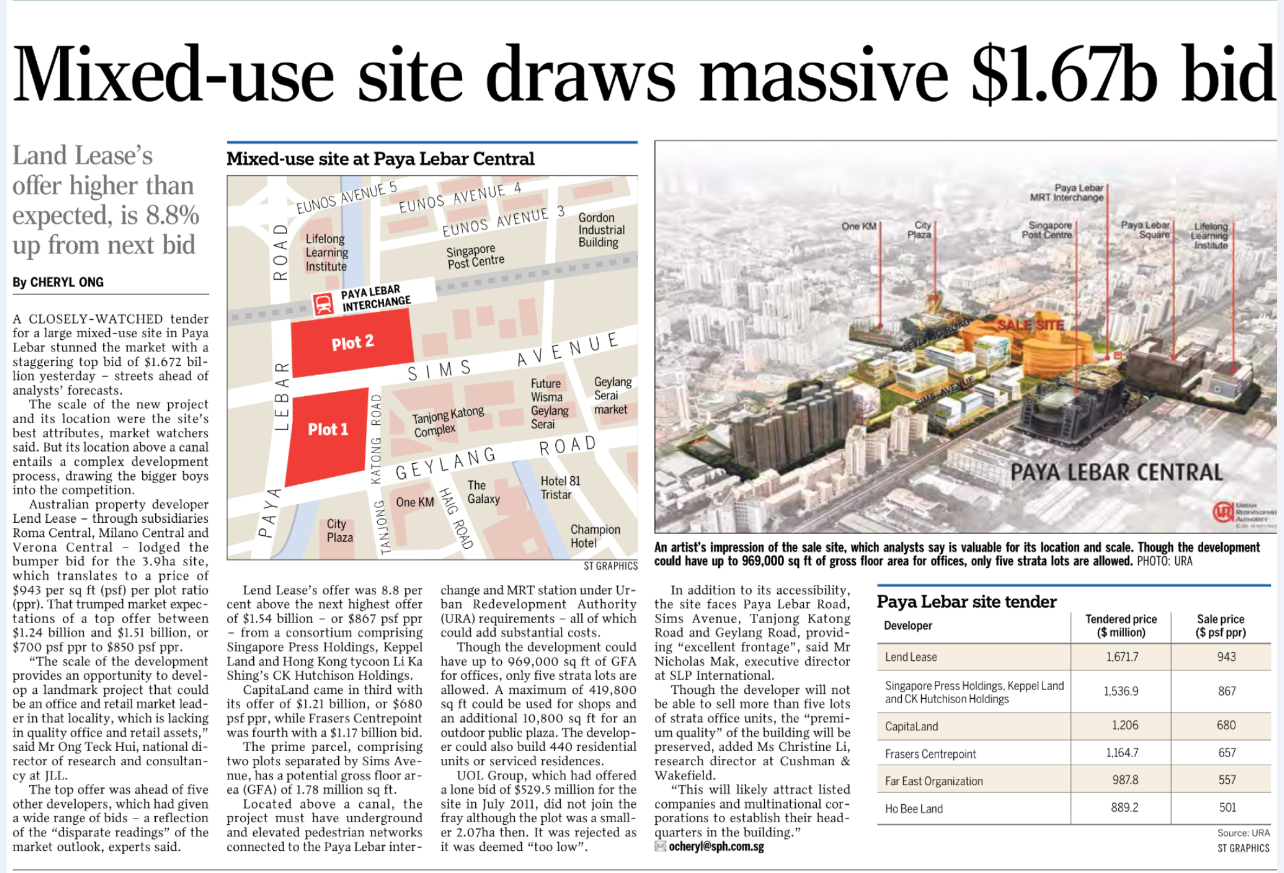S'pore, Malaysia will have to decide on funding model, keep eye on costs

Malaysian Prime Minister Najib Razak (left) and Singapore Prime Minister Lee Hsien Loong, after their annual leaders’ retreat at the Shangri-La Hotel on May 5, 2015. Both pledged their full commitment to realising the high-speed rail link, calling it the most important project on the current bilateral agenda. -- PHOTO: ST FILE
FINANCING the high-speed rail linking Singapore and Kuala Lumpur will be a complex undertaking, say experts.
In addition to construction and design costs, the Republic and Malaysia will both have to decide what funding model to use.
They will also need to contend with the risk of delays due to design changes and cost overruns.
On Tuesday, Prime Minister Lee Hsien Loong announced that the Singapore terminus for the rail link would be in Jurong East.
The project will require significant investment in land, stations, tracks, power and permits, among other things, said Associate Professor Willie Tan, head of the department of building at the National University of Singapore's School of Design and Environment.
Land acquisition is also a major issue and could be a potential cause of delay, he added.
The two governments have a range of financing options to consider, Prof Tan said. The project could be fully funded by both governments - the traditional approach where the government develops and owns the system.
The project could also be financed with a mix of public and private funds, with the governments buying part ownership of a project company. The private sector would retain some ownership and derive some income.
"For the private sector to provide funding for the project, it will have to be comfortable with the risk allocation between the government and the private sector, and the financial viability of the project," said Mr Oliver Redrup, associate director for transport at PwC Singapore.
In the case of the high-speed link connecting London and Paris, each country was responsible for choosing the financing approach for the infrastructure in its own jurisdiction, he noted.
The tunnel under the English Channel was jointly procured by the English and French governments using an 80-year concession agreement, so private financing could be utilised.
Still, large capital projects, regardless of location, are often delivered over budget and late, Mr Redrup said. "At the outset... there must be clear mechanisms for dealing with design changes, delays and cost overruns."
Controls are also needed during the construction, he added.
Fares would need to be worked out as the purchasing power of Malaysians would differ substantially from that of Singaporeans, said Mr Fang Li Wei, infrastructure and capital projects leader at Deloitte South-east Asia.
"The fares would need to be fair to both sides so as to ensure the required ridership, to break even operationally and to pay for the loans," he said.
The Straits Times / Top of The News Published on Thursday, 7 May 2015
Financing high-speed rail a complex task: Analysts
Please click the following for other Related Readings:
Please click the following for other Related Readings:














No comments:
Post a Comment